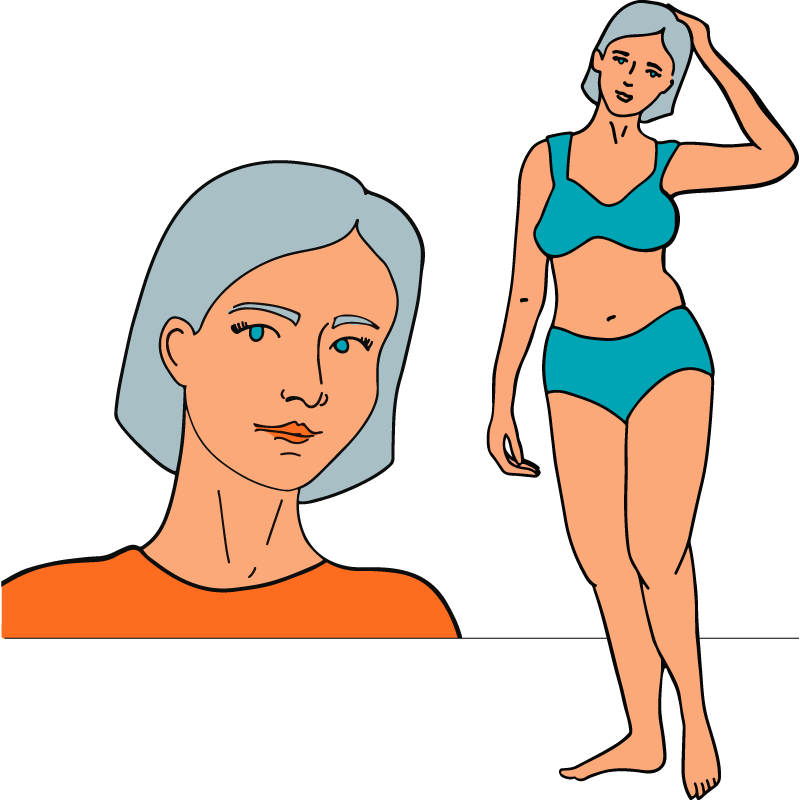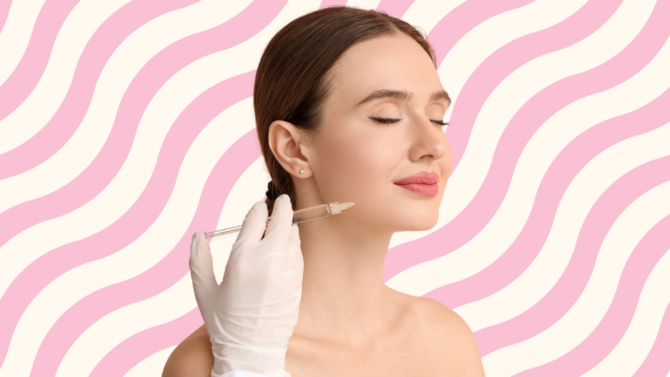Where has the volume in my face gone?
When we are young our skin is plump and our cheekbones are more defined and sculpted but, as we age, we begin to lose volume in our face. This is due to a number of factors. Not only do the levels of hyaluronic acid and collagen in our skin deplete with age, but gravity also takes its toll and our underlying support structures, such as fat pads under the eyes and in the mid face, start to head south. Our bone structure also changes as we age and we get bone resorption, which means our scaffolding is not as strong as it once was.
What causes lack of volume in the face?
Lack of volume in the face is a natural part of the ageing process but it can be accelerated due to lifestyle factors which prematurely age us, such as alcohol consumption, stress, smoking and sun damage. Volume loss can also be exasperated by weight loss as we get older and of course can be the result of illness, drugs and medication. Recently exercise has also been cited as a cause of volume loss with the term “runner’s face” or “gym face” being coined to describe the hollow looking faces of those who hit the gym hard. Continuous high-impact training can lead to loss of volume and sagging of the skin as well as increased oxidative stress and increased production of free radicals, which in turn causes breakdown of collagen and elastin.
Is it only ageing that causes lack of volume in the face?
Ageing and weight loss are the major contributing factors to volume loss in the face but the two in combination are most likely to make the face look more hollow and gaunt. Friend’s star Courtney Cox once famously said that as you get older you have to “choose your battles”, either your face or your body, and there’s an element of truth in that. Someone who is heavier weight wise may still have a plumper and more full face as they age, whereas someone who is very slim would not have as much fat in their face to begin with so the ageing process would only highlight that.
Can skincare increase volume in the face?
Skincare is primarily designed to treat the canvas, the quality of your skin. Although active and results-driven products can and do work at deeper levels, skincare alone will not replace lost volume but can be used in combination with other tweakments to enhance results and improve the appearance of your skin.
How to I prevent losing the volume in my face and sagging?
Volume loss and skin sagging are natural parts of the ageing process, but there are things you can do to slow premature ageing down. Some of the biggest contributing factors to ageing before your time are sun damage, smoking, stress and alcohol consumption. Wearing daily SPF protects your skin from sun damage. Antioxidants also help provide additional protection against free radical damage, which can accelerate the ageing process. Following a healthy balanced diet and looking after yourself won’t prevent ageing but the healthier you are and the less bad habits you have can make a difference. Dramatic weight loss and yo-yo dieting can also play a part, so maintaining a healthy weight will benefit your face too.
How can I treat loss of volume?
One of the most popular and effective treatments for volume loss is dermal fillers. They can be used to re-build the facial structure, offering more support for the skin, restoring not only plumpness but a lift too. Aside from lips, cheeks are one of the most commonly treated areas with dermal fillers. They can also be used to replace lost volume under the eyes which causes a hollow appearance, known as a tear trough. Most fillers used today are non-permanent and are made from hyaluronic acid, a naturally occurring substance in the body. In order to provide lasting results (anywhere from six to 24 months), the hyaluronic acid is cross linked. Volumising fillers are usually thicker or more viscous products than those used in the lips and there are many different varieties and brands.
Other treatments used to replace lost volume include those which come under the category of “regenerative treatments”. These encourage the body to make new collagen and replenish hyaluronic acid levels itself. Treatments in this category include PRP (platelet rich plasma), fat transfer and also “bio-remodelling” products such as Profhilo.
New collagen can also be stimulated using devices which work at a deep level within the skin. These include technologies such as high-intensity focused ultrasound or HIFU.
How to restore volume to your face naturally?
It is difficult to replace lost volume naturally. Volume loss is mainly due to a loss of fat in the face so gaining a little weight as you age may help your face appear plumper again, however, as most people are trying to lose weight (not put it on) this is not an option that appeals to many. And there’s health issues to take into consideration if you gain too much weight. If you are looking for a more natural option and don’t want to have dermal fillers, then some of the bioregenerative procedures which use your own cells to stimulate new collagen may help.











 The Tweakments Chatbot
The Tweakments Chatbot